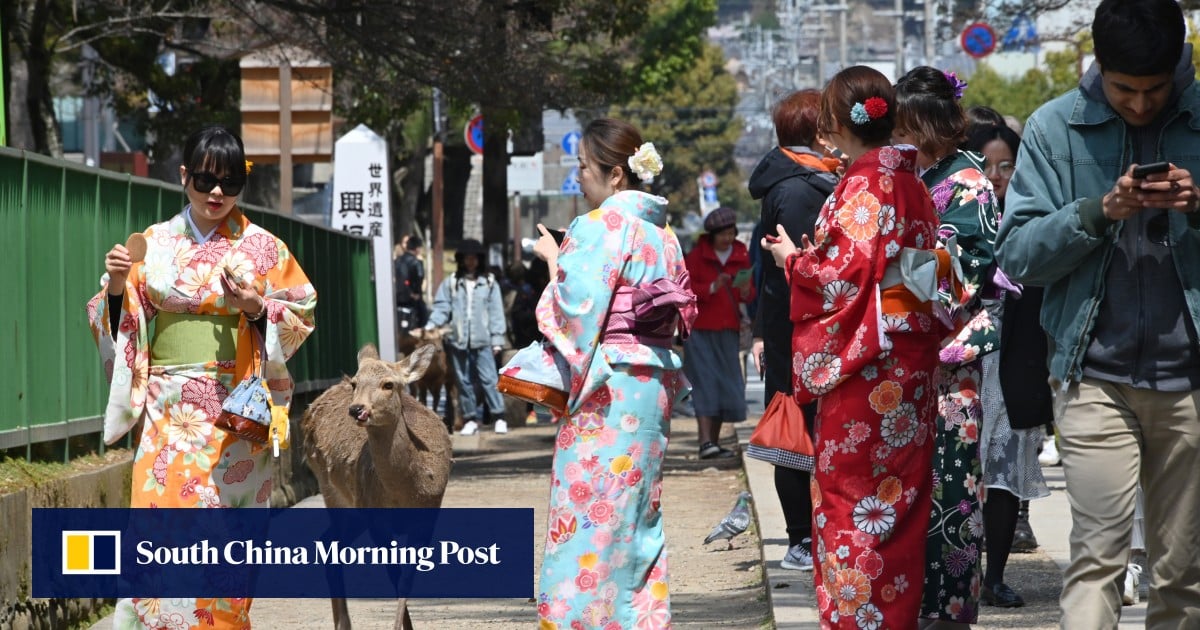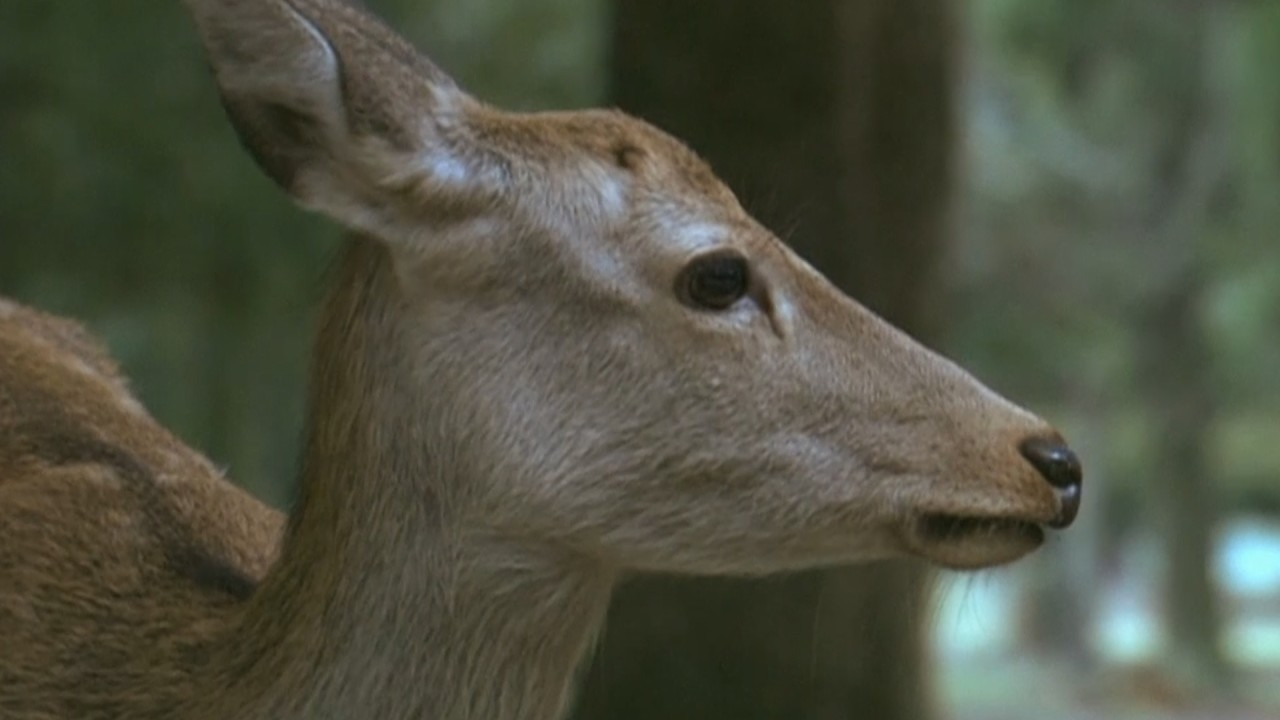“The tourists love to see the cute bambis and feed them and I’ve never seen them attack a person or bite,” said Tsutomu Harada, a tour guide who has visited Nara several times.
“For us, they are sacred animals that must be respected but they are also one of the most important tourist attractions in the city,” he said.
“But with more deer and less space, the border between where the deer can go and graze and the areas where they are not meant to go is becoming harder to protect.”
In Japan, cows cross the zebra line to get away from irritating insects
In Japan, cows cross the zebra line to get away from irritating insects
On Monday, a panel set up to consider problems associated with the animal released a plan that would permit the culling of deer found in a “buffer zone” immediately around the park.
At present, wild deer within the park are protected while the ones inside the buffer zone that are injured or causing a nuisance by getting into farmland are trapped and transported to fenced enclosures in the facility. Beyond the buffer area is the “controlled zone,” where up to 180 animals are slaughtered every year.
The committee also suggested the euthanisation take place within the buffer zone, adding how many deer would be put to death will be finalised in the coming months.
The panel’s chairman Okimasa Murakami said he hoped the public will be “understanding” of the need to cull more deer if it is carefully explained.
Travel guide Harada is not convinced, though he noted there was a need “to find a balance between the natural world and the needs of local people, the community, the tourism industry and so on”.
The culling bid came after accusations of maltreatment of deer first surfaced last autumn, when a veterinary surgeon working for the Nara Deer Preservation Foundation informed city and prefectural authorities that managers of the organisation had ignored her complaints that around 270 animals in enclosures were starving to death.
Officials of the facility, which takes in the deer caught plundering farmers’ fields or injured in road accidents, denied the doctor’s claims.
Nobuyuki Yamazaki, the secretary general of the foundation, claimed that many had emaciated because they were “worn out at the time of their capture or failed to adapt to a new and unfamiliar environment”, the Asahi newspaper reported.
Japan’s fastest roller coaster closed for good over reports of broken bones
Japan’s fastest roller coaster closed for good over reports of broken bones
A Nara prefectural tourism official said there was some “confusion” over the issue that made the headlines across Japan.
“The deer in Nara Park are healthy and well-fed – in part due to all the crackers that the tourists give them – but there have been reports of problems with sick and injured animals at the preservation facility,” Yumiko O’Donnell said.
“It seems the number of deer in the facility is increasing but there is not enough food or staff to care for them,” she added. “Conditions there are not good.”
She said Nara and the city were aware of the matter, and additional funds have been earmarked for the preservation organisation.
She also said this will not solve the problem of too many deer roaming the area, but the panel would keep the aspect in mind before taking a final decision on the cull.


